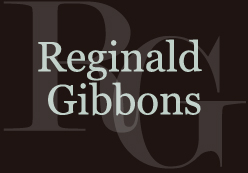The eagle cam (Decorah, Iowa) is showing lots of sleeping time (the chicks) and patient sheltering (adults); the parent birds fly in or off by turns and feed their chicks with gobbets torn from fresh or rotting carcasses of rabbits, fish, small woodchucks, birds. For warmth (or comfort), the big chicks can’t get much more than their big noggins underneath a parent’s breast. The site has fifty million hits. (See raptorresource.org, then click on “bird cams”)
I wonder if there is a prosody of bird sounds—regarding calls, it doesn’t seem at all possible, but perhaps for songs (only “songbirds” have these) there is something. Whether there are universals of prosody in human language is a question, too, with strong opinions on both sides. Some of the oldest traces of poetry in the huge family of Indo-European languages suggest that in the mother-language itself, Indo-European, there was already an established poetic line of about 11 syllables. It can’t be a coincidence that the longstanding lines of similar length in European languages, for example, are about the same length; that’s simply the history.
What’s interesting to the poet and the reader now is what the rhythms of lines are. There’s no question that spoken English roughly alternates syllables with some speech stress and syllables with little or none. The whole description of the eagle cam, above, is entirely in iambic feet, with only a couple of substituted feet (pyrrhic followed by spondee, as some call it; “that other thing,” as I have been, perhaps too flippantly, calling it in this series of posts), and it isn’t very hard to create perfectly iambic rhythms in English that sound like everyday speech, since the pattern arises from the language and is not forced onto it.
But once you hear what I’ve done in the paragraph about eagles, above, it will certainly sound monotonous—because I have forced the language a little by making every single pair of syllables fit the pattern of iambic rhythm that verse makes use of for structure, tone, and the subtle play of surprise against expectation (which is the way English poets have described the effects of meter). The living language that we speak is not verse, so the rhythms of it are never that finely, that deliberately, managed, even though it is roughly iambic all the time.
Yesterday I attended a group discussion led by Derek Attridge, who is visiting Northwestern University this quarter, on prosody, and he proposed that a four-line, four-beat form known in Russian and called the dol’nik might be analogous to something that exists in English without as yet having a name (so it goes unrecognized as a verse form). He showed us ways of hearing the rhythms in W. H. Auden’s “As I Walked Out One Evening” and Thomas Hardy’s “Neutral Tones,” and suggested that these rhythms are dolnikish (my word, not his). He listens to (and counts) beats and offbeats of a line as a whole, rather than scanning feet. And our discussion quickly showed that many of us are skeptical of everyone’s else’s way of analyzing the rhythm of a poetic line. All of which made for a very absorbing discussion that arrived at no conclusions, of course, for the pleasure of it was in entertaining alternative views.
Today the eagle cam has added annoying video ads, as if TV itself had to barge in and conquer the quiet, slow, continuous passage of time at the eagle nest—where only a few things happen, all day long, and yet where the show of incremental change in life, as the chicks perceptibly grow and the adults imperceptibly age, is (evidently for lots of people) very absorbing. (I know—it’s not some abstract creature called “TV” that does this; it’s the eternally corrosive pressure of profit.) I find the “raw” (like the fish, etc., the eagles eat) video of the nest more absorbing than the continuous fast sequence of “technical events” of edited video or film, whether in ads or programs, which artificially create a sense of movement far faster than that of ordinary time. I’m sure many people have theorized all this in many ways.
Like the slow rhythm of the nest (arrival and departure of parents; feeding and sleep) and also like the fast-flying and completely continuous speed of the parental hunt for prey or carrion, rhythms of language are a very old pattern indeed. In terms of the human life span, the patterns are far older than we are capable of imagining. (For poetry, 250 generations? 500 generations? 1000 generations? For human language itself, 5000 generations? Eagles have no imagination, but we might call their knowing how to do eagle things a kind of memory, and if so, then it goes back millions of generations.)
So the rhythmic argument for free verse is that there are more expressive possibilities in using that only roughly iambic rhythm of English. And all poetry, metrical or free, can push expressively against the iambic rhythm of English as well as using it, along a continuum that includes taking words out of syntax entirely, as in some of Robert Duncan’s “Passages”; or creating intense “free” rhythms that are very deliberately not iambic (rather than falling without realizing it into iambic rhythms, which I think is an awful thing to do); or by using a different kind of linguistic rhythm, like that of Auden’s poem or Hardy’s, which can’t be scanned in the usual metrical way, and which nevertheless offers (in Auden’s poem) a very satisfying, sensuously pleasurable rhythm (familiar from the ballad tradition), or (in Hardy’s poem) a perplexing rhythm that underlines the agitation of feeling expressed in the poem. All poets feed on past poetry as prey or carrion. I suppose it’s their poems that receive the gobbets of flesh and grow big on them.
I send my thanks to Derek Attridge and to the unwitting eagles… (and to those eagles Auden and Hardy, too…)
*
Two useful books:
John Thompson, The Founding of English Meter
Derek Attridge, Poetic Rhythm: An Introduction

